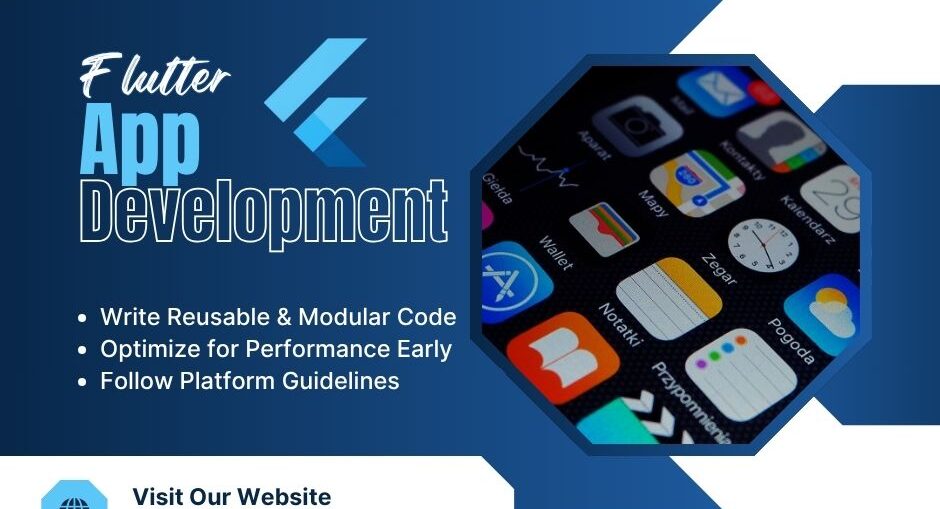In the rapidly evolving landscape of mobile app development, choosing the right framework is paramount to success. For many of the world’s leading brands, that choice has increasingly become Flutter. Google’s open-source UI toolkit has rapidly matured, offering an unprecedented blend of speed, performance, and aesthetic appeal. This article delves into how top-tier companies have leveraged Flutter to build innovative, high-performing applications that captivate users and drive business growth.
The Rise of a Cross-Platform Champion: Why Flutter Stands Out
Flutter has emerged as a dominant force in cross-platform development, and its ascent is no accident. At its core, Flutter enables developers to build natively compiled applications for mobile, web, and desktop from a single codebase. This unique capability significantly streamlines the development process, slashing both time-to-market and development costs.
Unlike other frameworks that rely on bridges to communicate with native components, Flutter directly compiles into native ARM code. This results in applications that offer near-native performance and incredibly smooth animations, indistinguishable from apps built with platform-specific languages. This performance, coupled with its “hot reload” feature, allows developers to see changes instantly, fostering a highly iterative and efficient development workflow.
A Canvas of Creativity: Crafting Stunning User Experiences
One of Flutter’s most compelling attributes is its rich set of customizable widgets. These pre-designed, yet highly adaptable, UI components adhere to native platform guidelines, ensuring a consistent and delightful user experience across both iOS and Android. From intricate animations to seamless transitions, Flutter empowers designers and developers to bring their most ambitious visions to life.
Brands understand that a visually appealing and highly responsive user interface is critical for user engagement and retention. Flutter’s rendering engine, Skia, ensures pixel-perfect graphics and fluid interactions, providing a premium feel that resonates with users. This focus on visual fidelity and a superior user experience directly contributes to higher satisfaction and engagement metrics for applications built with Flutter.
Efficiency Unleashed: Accelerating Time-to-Market and Reducing Costs
For large enterprises, the cost and time associated with developing and maintaining separate applications for iOS and Android can be substantial. Flutter directly addresses this challenge by enabling a single development team to target multiple platforms with one codebase. This drastically reduces development effort, testing overhead, and overall maintenance costs.
Consider the implications for a global brand: instead of managing two distinct codebases and two separate development cycles, a single Flutter team can deliver updates and new features simultaneously across platforms. According to a 2025 study, companies utilizing Flutter have reported a reduction in time-to-market by up to 30%, a critical advantage in today’s competitive digital landscape. This efficiency is a key reason why many companies are actively seeking a specialized Flutter app development service to accelerate their digital initiatives.
Expert Voices & Consensus: A Resounding Endorsement
Thought leaders and industry experts largely agree on Flutter’s significant advantages for enterprise-level app development. “Flutter’s layered architecture and the performance of Dart make it an ideal choice for building robust and scalable applications for businesses of all sizes,” states a leading mobile technology analyst. “Its ability to compile directly to native code, bypassing the performance bottlenecks often seen in other cross-platform frameworks, is a game-changer.”
Real-world success stories further illustrate Flutter’s business adaptability. For instance, companies like Google (Google Pay, Google Ads), Alibaba (Xianyu), and BMW (My BMW App) have publicly touted the benefits they’ve reaped from Flutter. My BMW, for example, successfully launched its app in 47 countries across five continents, consolidating 1.7 million lines of code between Android and iOS into a single, maintainable Flutter codebase. This not only streamlined their deployment but also ensured feature parity across devices, a crucial aspect for a premium brand. Similarly, eBay Motors reported that 100% of their developers preferred Flutter, enabling them to release new app versions weekly. These examples highlight Flutter’s capacity to deliver substantial business value through enhanced development efficiency and a consistent user experience.
Security and Scalability: Building Future-Proof Applications
Enterprise applications handle sensitive data and demand robust security. Flutter inherently benefits from the security features of the native Android and iOS platforms it compiles to. Furthermore, Dart’s compilation to ARM binary code makes it significantly harder for malicious actors to reverse-engineer applications, adding an extra layer of protection.
- App Permissions: Flutter apps leverage native OS permission systems, ensuring user data privacy.
- Data Encryption: Integration with standard encryption libraries allows for secure data handling.
- App Sandboxing: Applications operate within secure sandboxes provided by the underlying OS, limiting potential vulnerabilities.
- Scalability: Flutter’s modular architecture allows businesses to expand features and onboard new users without compromising performance. This makes it an excellent choice for applications that are expected to grow significantly over time.
Navigating the Future: Actionable Insights for Decision-Makers
For CTOs, product managers, and business owners evaluating Flutter for long-term use, several actionable insights are crucial:
- Strategic Adoption: Begin with smaller, non-critical projects or MVPs (Minimum Viable Products) to gain internal expertise and validate Flutter’s fit for your organization.
- Developer Training & Hiring: Invest in training existing development teams or partner with a reputable Flutter app development company to access skilled Flutter developers. According to a 2025 developer survey, Flutter continues to gain traction, with a significant increase in the developer pool, but securing top talent remains competitive.
- Ecosystem Utilization: Leverage Flutter’s extensive package ecosystem and community support to accelerate development and access ready-made solutions for common functionalities.
- Performance Monitoring: Utilize Flutter’s built-in performance profiling tools (like Dart DevTools) to continuously monitor and optimize application performance.
- Future-Proofing: Stay updated with Flutter’s roadmap and new releases. The framework is actively developed by Google, with continuous improvements in areas like WebAssembly support for web applications and enhanced AI/ML integration.
By strategically adopting Flutter, businesses can unlock significant advantages in development speed, cost efficiency, and user experience, positioning themselves for sustained success in the competitive digital landscape.






